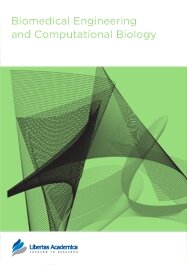

Publication Date: 30 Jul 2012
Type: Perspective
Journal: Biomedical Engineering and Computational Biology
Citation: Biomedical Engineering and Computational Biology 2012:4 1-15
doi: 10.4137/BECB.S9335

In many applications that include direct human involvement such as control of prosthetic arms, athletic training, and studying muscle physiology, hand force is needed for control, modeling and monitoring purposes. The use of inexpensive and easily portable active electromyography (EMG) electrodes and position sensors would be advantageous in these applications compared to the use of force sensors which are often very expensive and require bulky frames. Among non-model-based estimation methods, Multilayer Perceptron Artificial Neural Networks (MLPANN) has widely been used to estimate muscle force or joint torque from different anatomical features in humans or animals. This paper investigates the use of Radial Basis Function (RBF) ANN and MLPANN for force estimation and experimentally compares the performance of the two methodologies for the same human anatomy, ie, hand force estimation, under an ensemble of operational conditions. In this unified study, the EMG signal readings from upper-arm muscles involved in elbow joint movement and elbow angular position and velocity are utilized as inputs to the ANNs. In addition, the use of the elbow angular acceleration signal as an input for the ANNs is also investigated.
PDF (2.08 MB PDF FORMAT)
RIS citation (ENDNOTE, REFERENCE MANAGER, PROCITE, REFWORKS)
BibTex citation (BIBDESK, LATEX)
XML
PMC HTML


The submission process for publication in Clinical Medicine Insights: Case Reports is extremely smooth. The editors were very fast in their response and provided detailed instructions about all procedures. They were happy to answer to all our questions. The whole process was fast and efficient. Congratulations to Libertas Academica.
Facebook Google+ Twitter
Pinterest Tumblr YouTube